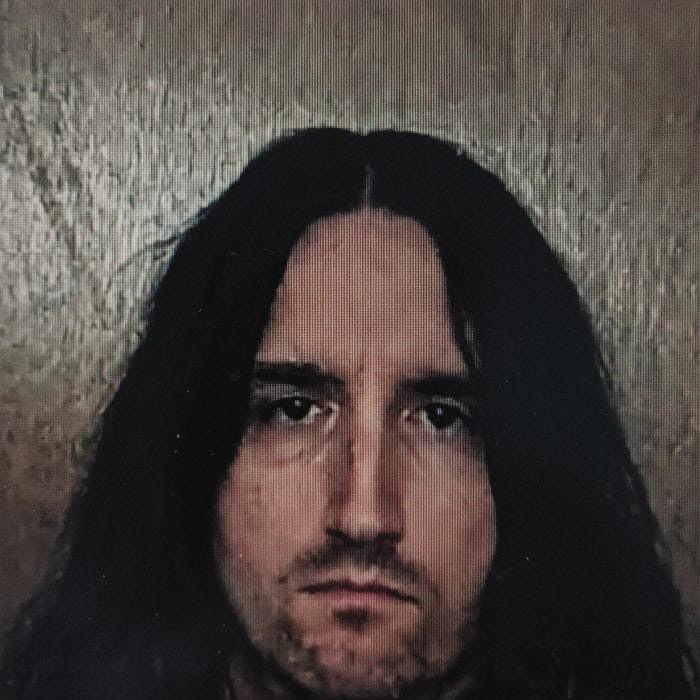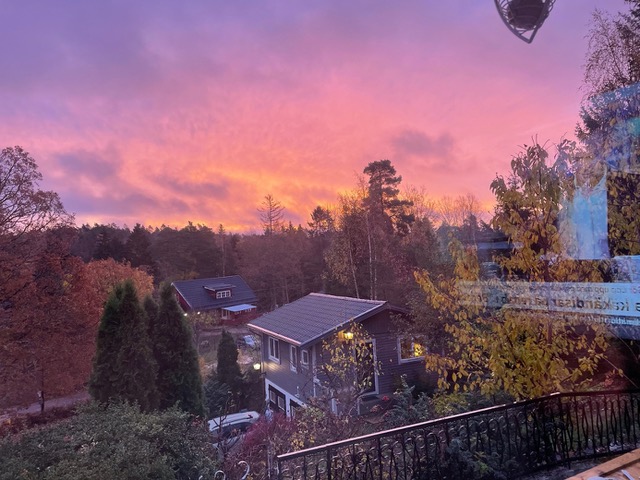"SHADOWY AND DISTORTED!"- BRIAN LUCAS SPEAKS TO SOUND AND VISUAL ARTIST STUART CHALMERS

Stuart Chalmers is an enigma, yet savvy listeners may not think so considering his massive sonic output and unmistaken underground presence (under his own name and various aliases) over the last twelve years. Why “enigma”? Perhaps because he leaves himself out of his musical equations and this impersonality opens the field to a freedom of listening unencumbered by ego or image. Does anyone know what he looks like? He’s probably walking among us now, shadowy and distorted!
His work encompasses everything from hypnotic tape collage, ritualistic field recordings, and Swarmandal improvisations. His collaborations are notable for their range of partnership: Territorial Gobbing? Check. Neil Campbell? Check. Howard Stelzer? Check. Nick Edwards? Check. Old Million Eye? Err...check!
In addition to sound creation/manipulation, Chalmers is also a visual artist, yoga instructor, and music teacher. He lives in the wilds of North Yorkshire, UK. I thank him for taking the time to answer a few questions about his music making and visual art practice.
-Brian Lucas, 2022
-----
Brian- Let's talk about your early years and music: what were some early musical interests for you? Did you play in bands as a youth/adult? What is your musical/personal background?
Stuart- Probably in the womb, but I can't be sure. After that, I was into 80’s cartoon themes like Transformers, Jayce and the Wheeled Warriors or Dungeons and Dragons. Further on I got into guitar music (rock, alternative, and grunge) and started playing electric from that.
Brian- When did your interests in more experimental approaches to music start? What brought you to more esoteric forms of music?
Stuart- A big turning point was attending the Midnight Sun: Sounds of Norway tour where I saw Supersilent, Sidsel Endresen, Christian Wallumrod, and Jan Bang etc. It showed me what could be done with sound, leaving behind the tethers of scales, harmony and chord structure.
I didn't start making music influenced by all this until around 2005 when I moved to Bristol and started improvising with the Cube Orchestra and various people I met involved in that. It was here I discovered you could make stuff with cassette tapes, toys and DIY instruments. You could also just improvise freely or use a predetermined process to generate sounds. That opened my mind up to more possibilities. Maybe being exposed to mind altering substances did play a part, but I had a feeling this music seemed freer and more intuitive.
Brian- You have an extensive list of releases, including many collaborations. What is it about collaborations (including our own) that interests you (if you want to talk about specific releases, please do)?
Stuart- I do collaborative work as I like what the other collaborators bring to the process either by taking the tracks in a different direction or just inspiring me to take risks. It can also be that I hear what another person does with their solo recordings and then imagine how we could sound together.
Brian- The earliest release I have by you is under the name Skarabee. The "Tlon" album is a nod towards Jorge Luis Borges, I assume? What are some inspirations outside of music that might motivate you?
Stuart- Yes, you are spot on, I was going through a period of being a big admirer of his stories. Particularly the story, Tlon, Uqbar, Orbis Terius.
I go through periods of being inspired by film or painters more than music. Decasia by Bill Morrison directly inspired the album called Poetry of Decay. Daydream Empire was inspired by Jean Dubuffet and his Art Brut collection and the films of Jeff Keen.
Andrei Tarkovsky and Yasujiro Ozu were important filmmakers who got me thinking about time, memory and the idea of Mono No Aware. This led me to discovering Wabi Sabi and Yugen artist ideas that originated in Japan. I then tried to recreate those ideas/feelings into sound. Recordings like Suikinkutsu, A Life in Sound: Diaries 2001-2020 and Aki No Kaze have all come out through this.
Recently I've been more inspired by nature and the forces or elements of the natural world, this resulted in albums like Heart of Nature and Aki No Kaze.
Brian- You mentioned having an intuitive approach to sound making. Do you have any specific rituals or environments you set up that are conducive towards sound making?
Stuart- Yes, I find a minimal set up works best, and something where the I (ego) can get out of the way and let the sound come out by itself. I may start something but will then let the energy produced move of itself. For example, I did this with Suikinkutsu which was recorded water droplets striking various objects in a cave to produce a DIY gamelan or percussion orchestra.
With the Sound Environments releases in caves and woodlands I found objects in those particular places that could produce sounds as well as bringing instruments or sound making objects with me.
Brian- When I first heard your music a lot of it seemed centered on the Swarmandal. How did you come across such an instrument and what was it about it that you liked exploring?
It was a gift given to me by my sister who knew I played stringed instruments so thought I could use it. Thought I’d see what would come out of it and I enjoyed playing it. Combined with fx pedals or preparing it with objects I found I could make a wide range of sounds and textures. So I focused on exploring this which can be heard on the series of recordings starting with the words The Heart of ..etc.
Brian- Your Sound Environments series sees you immersing yourself in very specific locales such as woodlands and caves. Can you talk about this series?
Stuart- Yes, these started as I was feeling like recording with my home set up was becoming predictable and needed a new way to play/record. I've been a fan of land artist Andy Goldsworthy for a long time and wondered what It would be like to use sound outside within each environmental space itself. I took instruments along or found objects like stones or wood around each space to use for sound making. The sounds already occurring like running water or of a woodland at dusk were used as another instrument or voice in the whole soundfield. I then improvised and recorded my responses.
Brian- How often do you work on music? Is it a daily practice for you? Do you start off with a concept and then go from there, or do the songs suggest themes to you as you're producing them/listening back?
Stuart- It used to be a weekly thing, or daily if I'm editing and fine tuning some recordings. I tend to improvise loads and record the results maybe with a general idea. It changes but for one album of 45-50 mins I will have had about 3-4 hours of material to start. So yeah less is more works with me! Like a sculptor I chip away until something is left. The finer ideas or themes tend to come as I'm working through.
Brian- What are some upcoming projects you're working on? Do you play live very often? What is the abstract music scene like where you live (or the nearest area/city/etc)?
Stuart- No nothing planned for recording or live. I've retired! I’m improvising stuff at home but nothing concentrated. I don't go to gigs anymore, since Covid came along. I've just got out of the habit. Doing more painting at the moment.
Brian- I've seen a few of your recent drawings. Is visual art going to be a component of your next release? How does visual art affect your approach to sound making?
Stuart- Don't know I was just painting for my own pleasure as well as part of my Zen practice for the mind and body. Hitsuzendo is about achieving a meditative state where a spontaneous image or pattern can come out, beyond planning, concepts or even the idea of good or bad.








Comments
Post a Comment